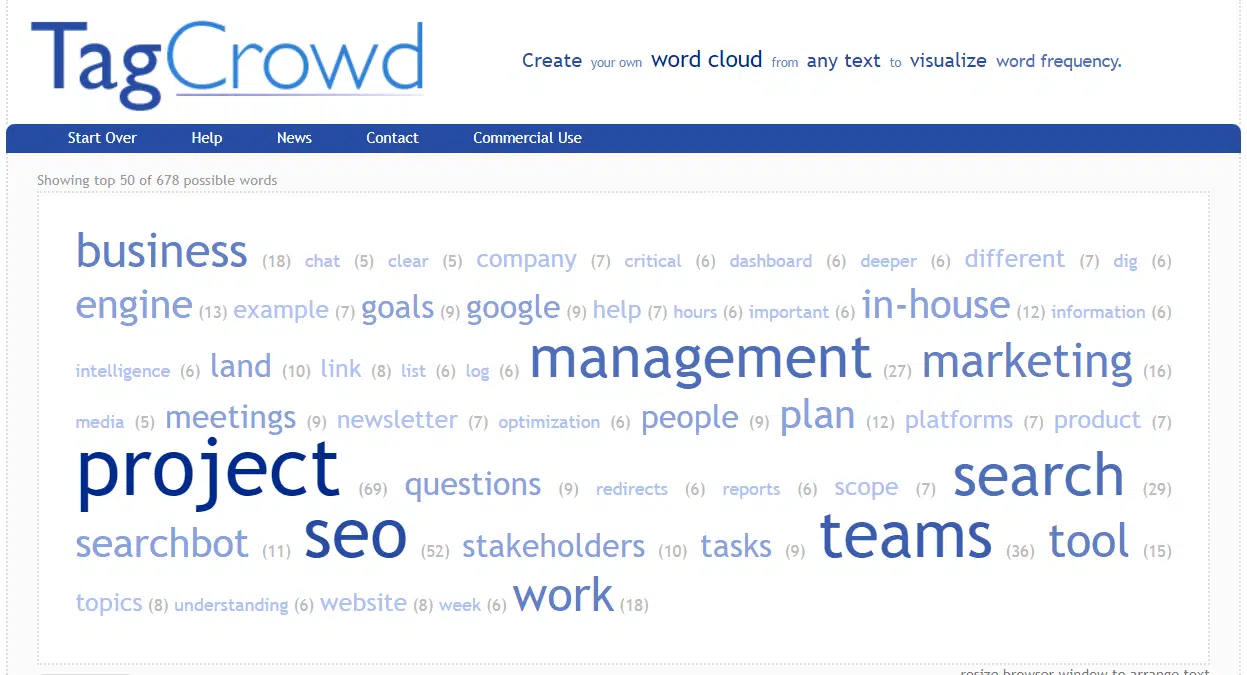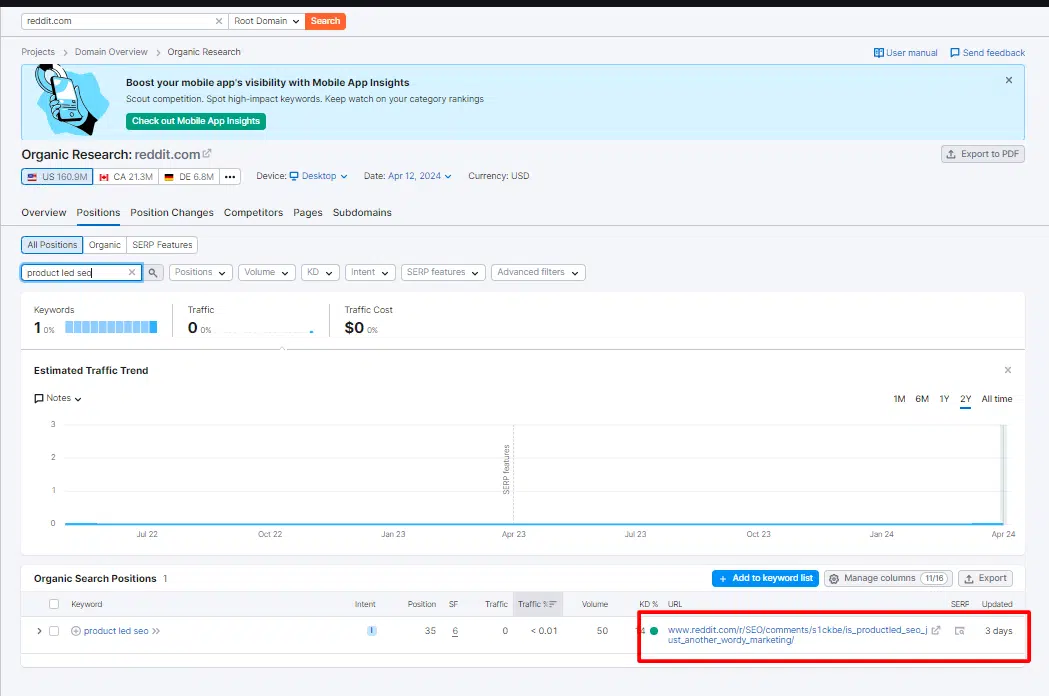How to launch a product-led SEO strategy
Five practical tips for transitioning from a keyword-focused approach to a customer-centric and product-led SEO strategy.
Today’s SEO landscape is fraught with uncertainty, marked by:
- Frequent Google updates.
- The transformative rise of AI.
- The significant influence of the digitally savvy, brand-agnostic Gen Z.
Keeping your website strategy tied to traditional notions like keyword research based on search volume is a recipe for a slow but certain death.
But what are your options?
One possible escape route is product-led SEO, which focuses your strategy on your customers’ needs, pains and desires.
This article will help you transition from a keyword-focused to a customer-centric SEO strategy, offering practical tips for integrating both approaches effectively.
5 steps to kickstart your product-led SEO strategy
1. Identify your customer
One fundamental mistake many SEO experts make is focusing on the website and forgetting about the customers.
Remember, keywords don’t make purchases; people do (or at least for now). This is why focusing solely on keyword research or technical audit won’t do the job. You need to know who is your ideal customer persona.
There are many ways to do this. The easiest one is to talk to your colleagues from the marketing department and see if they have this already.
If you know a colleague from another department who would likely use your product, spend a day shadowing them or conducting an in-depth interview. Discover where they go online for information and learning, what factors they consider when making decisions and their biggest daily challenges.
You can also visit the GA4 Demographics report for information about age, country and interests. Take the last with a grain of salt as your website might have attracted the wrong users.
Lastly, create a profile of your ideal customer. You can easily start with HubSpot’s Make My Persona tool.
Dig deeper: Do personas REALLY matter in content marketing?
2. Dive into your data
SEO often overlooks the valuable data gathered by customer-facing departments like sales and support.
Platforms such as Salesforce and Microsoft Dynamics offer rich insights into customer needs and behaviors, making them essential tools for SEO. Access to these platforms and their reports can significantly enhance SEO strategies.
The challenge with these tools is that navigation through the data directly in them could be a real pain. So, the easiest way to start is to create a report with the important information within the tool and then export it in CSV format.
Many organizations face restrictions on exporting CRM data due to privacy concerns. Always verify that your reports exclude personal identification information, such as emails, phone numbers, names and company details. Your goal is the information put in by your sales team, like a summary of the conversation or a description of the lead’s situation.
After exporting, you have a few options depending on the size:
- Read it manually.
- Cluster it with the help of a Python script.
- Or ask ChatGPT to do the heavy lifting.
As you look for repeating patterns in how your customers speak, you can also use simple tools like TagCrowd and then search for the words that are repeated the most in your initial report.

The end result of this exercise should be a document with three columns:
- Users’ pain point/challenge.
- Customers’ voice or how your customers have described this challenge.
- Information on how many times each challenge was mentioned.
Or if we need to translate these three into a more SEO-friendly language:
- Topics.
- Keywords related to the topics.
- Search volume.
Unfortunately, the data in your CRM platforms can often be insufficient.
In these cases, you need to expand your research beyond your company. One way to do this is through review platforms.
Dig deeper: An SEO guide to audience research and content analysis
3. Read customer reviews
If someone spent 30 minutes of their lives writing a review of your product, they either love it or hate it a lot. In either case, these users have given you valuable information.
While you can’t do much for those who hate some of the features and functionalities, you can analyze the rest for reasons to believe in your product and the pains you have resolved in their lives.
Most platforms provide ways to export your reviews in CSV format. The analysis process afterward could be similar to the one for the data in your CRM. You can even ask ChatGPT to make a SWOT analysis for your product and identify your strengths and weaknesses.
Review platforms offer more than just access to customer feedback. They provide valuable insights and real-life examples for content creation. Additionally, they grant access to competitor reviews, enhancing competitive analysis.
Collecting initial data for your competitors might require more in-depth knowledge of Python, an extra budget for a third-party tool, a browser extension or a lot of manual work. Regardless of the method, the outcome will provide valuable insights into how customers perceive your competitors.
Extract the use cases and real-life situations from these reviews, and if your product covers them, make sure that you show them in your content. Remember to uphold ethical standards and avoid making claims without verifiable evidence.
4. Expand your knowledge with forums
SEO professionals recently expressed frustration about Google’s preference for websites such as Reddit and Quora. These platforms thrive on content generated by real users, making them valuable for Google’s algorithms. Utilize this content to benefit your SEO strategy.
One way to start analyzing them is to use traditional keyword research tools like Semrush, Ahrefs, etc. You just need to check the domain and all the keywords it ranks for, then look for keywords related to your content.
With this approach, you will end up with a list of pages ranking for relevant keywords. Some might be concrete conversations, others communities. You can then easily expand them manually.

Once you are ready with your list, you need to extract the information. You can do this with:
- A web scraping browser extension (there are many different options).
- A website crawler with the capability to extract information (like Screaming Frog).
- Or a tool like Sheetsmagic which directly puts your information in Google Sheets.
The analysis can be done again with the help of AI or Python, or you can go through it manually. This time, you will receive one extra level of information – potential titles for your future content.
Merge insights from customer conversations, your own data and reviews to discover alignments with your ideal customer persona. This integration forms the backbone of your tailored SEO strategy, and the result will be your product-led content calendar and SEO plan.
Dig deeper: Advanced tactics to maximize the SEO value of user-generated content
5. Create content that answers your customer’s questions
To make this content work, you must answer your customers’ questions and give them solutions to their challenges while showing how your product/service fits into the picture.
Your blog should not become a duplicated version of your documentation; rather, it should present the features and capabilities of your product in a more storytelling manner.
Turn the customer examples you collected into compelling stories. Ideally, include quotes from real customers. If quotes are unavailable, use supporting statistics. Companies like PWC, EY, Deloitte, Accenture and McKinsey publish tons of research that you can use for inspiration.
Dig deeper: What is helpful content, according to Google
Aligning SEO with your product’s value proposition
Starting your product-led SEO journey is not difficult, and it could be eye-opening to learn why customers choose your product.
Your strategy shouldn’t be static. Once you establish the basics, it should evolve with your audience’s changing needs.
Only by always learning and changing can you ensure that you build lasting engagement and drive growth. Your customers are leading the way, but you must be dedicated to following them.
Contributing authors are invited to create content for Search Engine Land and are chosen for their expertise and contribution to the search community. Our contributors work under the oversight of the editorial staff and contributions are checked for quality and relevance to our readers. The opinions they express are their own.
Related stories
New on Search Engine Land